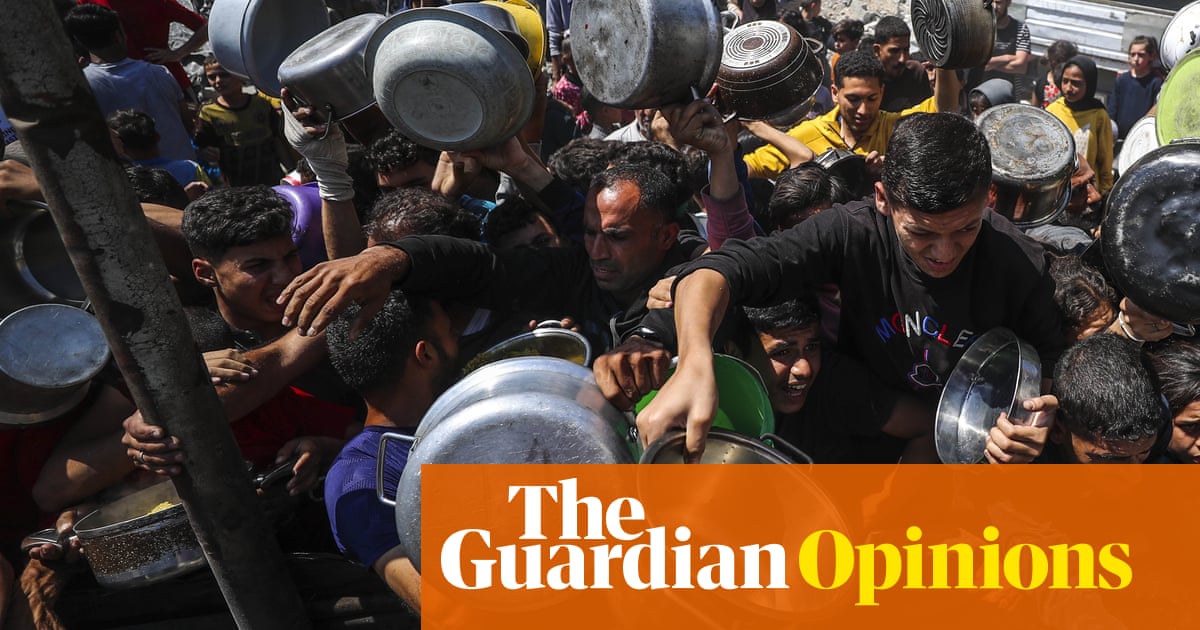Irecently looked up a biography of Rudolf Höss. The Kommandant who led the Auschwitz prison camp in Poland during the second world war was fastidious in his duties. He successfully oversaw the extermination of millions of people from 1940 to 1943, and, according to accounts, seems to have been a father whocaredfor his five children. His home life was imagined, and captured, by the film-maker Jonathan Glazer in his 2023 movie The Zone of Interest.
John Primomo recounts, in hisbiography, how the Nazi would randomly select groups of prisoners and sentence them to die by starvation. Höss was eventually captured by Nazi hunters and hanged for his crimes, in his case a slow death on a short gallows.
Yoav Gallant, the former Israeli defense minister, is the primary architect of the starvation policy in Gaza, which is unfolding as I write. The international criminal court issued a warrant for his arrestindicating“reasonable grounds to believe that Mr Netanyahu … and Mr Gallant … bear criminal responsibility for … the war crime of starvation as a method of warfare.”
Gallant’s successor, Israel Katz, has embraced the Gallant policy. He and his boss, Benjamin Netanyahu, broke the ceasefire with Hamas in March. Since then, they have worked fastidiously to starve the people in Gaza – food, medicine and critical supplies for the maintenance of human life have all beenprevented by Israeli troops from entering the territoryfor more than two months. Thisvideoshows a young girl, Rahaf, who is starving to death.
On 2 May, Amnesty Internationalissuedan urgent notice. “Israel must immediately end its devastating siege on the occupied Gaza Strip which constitutes a genocidal act, a blatant form of unlawful collective punishment, and the war crime of using starvation of civilians as a method of warfare,” it reads.
Unable to stand idly by, a group of activists, including Greta Thunberg, organized the Freedom Flotilla, a boat carrying supplies meant for Gaza. Their goal was to break into the “139-square mile prison camp”, as the journalist Ben Ehrenreich hasdescribedGaza. On 1 May, their boat was attacked and disabled by drones, according to eyewitnesses. A reasonable person may assume the Israelis destroyed the boat.
Starvation is attractive to mass murderers for a few reasons.
First, it’s cheap.
While Joe Biden and Donald Trump – and the majority of Democrats and Republicans in Congress – have committed more than$22bnof public money to Israeli’s genocide, killing people can be expensive. Tanks, bombs, missiles, drones, bullets and incendiary devices all cost money to make and deliver.
But starvation doesn’t require any big outlays. Impose a siege, and human biology resolves the rest.
Beyond being inexpensive to implement, starvation makes little noise. For those who seek to silence their victims – as Israel has by murdering at least 155 Palestinian journalists – and obscure their actions, starvation is a useful tool. There are no bomb craters, no burning children or journalists. There are only emaciatedcorpses. And 18 months into the darkness that has enveloped the Palestinians, they do not warrant many headlines.
And that benefit – obfuscation – extends to the patrons too. The leaders of the US, UK, France, Italy, Germany and so on – who have underwritten the extermination of the Palestinians – can feign ignorance, or just ignore, what their partners inIsraelare doing. They are busy people. Bandwidth is limited.
And yet, despite its advantages, starving humans to death is evil. Not least because of how it works.
Starvation is a slow, painful way to die. For survivors, particularlychildren, the future is attenuated. Normal brain and social development is disrupted and recovery may be impossible in many cases.
In the first stages of starvation, the body uses reserves – usually fat – to keep going. Once those reserves have been depleted – a process that varies from individual to individual – the body begins to consume itself. Organs like the lungs, liver and kidneys shrink before they too begin to be destroyed.
Finally, muscle is the only store of energy remaining. The body cannibalizes its protein. And as Dr. Nancy Zucker, Director of the Center for Eating Disorders at Duke University,explainedto NPR, “once protein stores start getting used, death is not far”.
The heart is a muscle – and it too is consumed, a fitting symbol for those leaders in the West, and the Israelis they sustain. Each of them a heartless person, no matter how well fed they may be.
Ahmed Moor is a Palestinian American writer and recipient of the Paul & Daisy Soros Fellowship for New Americans
